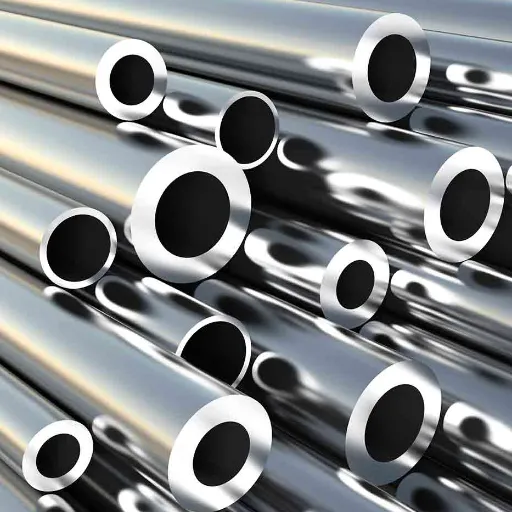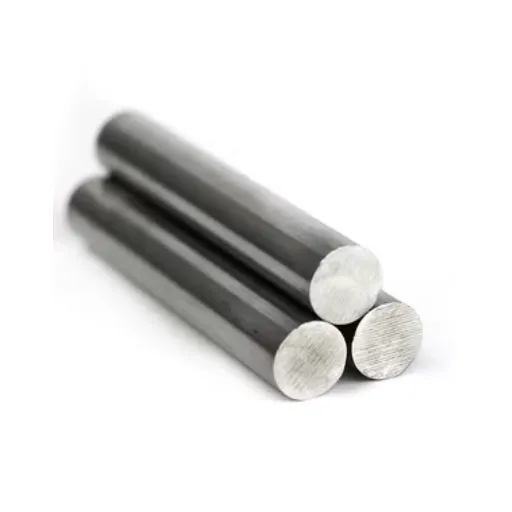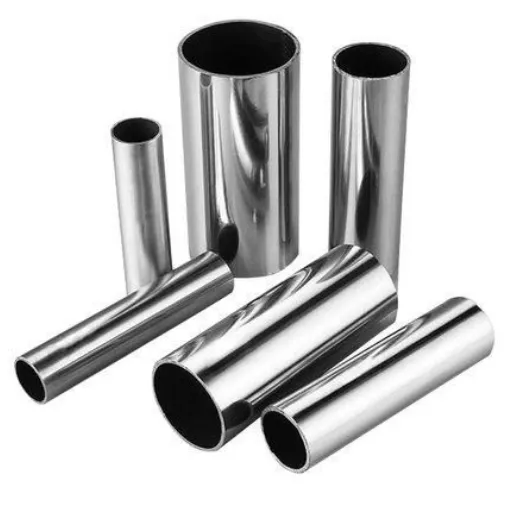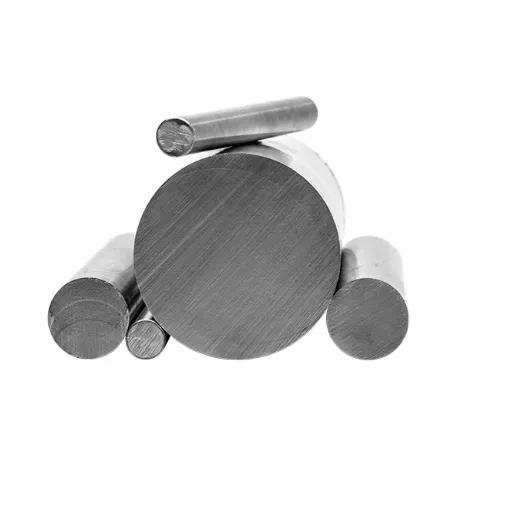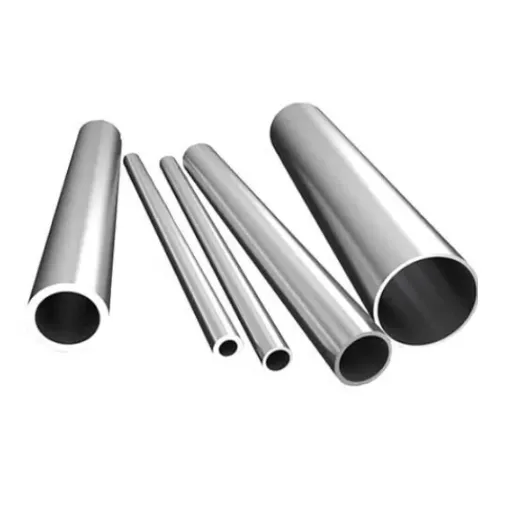One of the most common questions about metals is whether stainless steel qualifies as a ferrous or non-ferrous material. Metals are an essential part of countless industries, from construction and manufacturing to technology and design, and knowing the difference between ferrous and non-ferrous metals is critical for choosing the right material for the job. The contrasts between ferrous and non-ferrous may be tinted with some color when it comes to stainless steel-that’s a metal that glitter and is well-known for its durability. This article will explain what materials are considered ferrous and non-ferrous, reveal the distinguishing features of stainless steel, and answer this basic question to aid more informed decisions in material use.
Defining Ferrous Metals
Characteristics of Ferrous Metals
Due to iron content, ferrous metals are essentially strong and durable for material implementation. They are high in tensile strength and are all magnetic, with many uses in machinery and electrical applications. One of the distinctive characteristics of ferrous metals is their consideration to rusting or corrosion in the presence of moisture, but they can be treated or coated.
These are steel, cast iron, and wrought iron. Since they come in varying strengths and levels of versatility, all are used extensively in construction, automotive, and manufacturing industries. This makes any of the three less apt for outdoor or marine atmospheres unless they are treated to resist rust.
The very thing that differentiates stainless steel from other metals is its composition, which contains chromium. Its corrosion resistance is created first by the chromium, which forms a protective oxide layer on the surface of the stainless steel. Such a feature is not found in any other ferrous metals and thus renders it highly sought after in all applications requiring durability and a smooth, resistant finish.
Examples of Ferrous Metals
Those metals that have iron as the major component are said to be ferrous metals. Occasionally, additional elements like carbon, manganese, other ingredients, and alloys are put into their composition to strengthen their properties in terms of strength, ductility, and corrosion resistance. Because such metals are a very big combination of sturdiness and versatility, they find applications in construction, manufacturing, and everyday tools.
Carbon steel is a good example of the most prevalent ferrous metals. Due to its strength and low cost, it finds application in construction beams, bridges, and pipelines. It contains iron and carbon, with the carbon content varying depending on the application. Another common type is cast iron, which exhibits very high compressive strength and wear resistance by virtue of which it is used in cookware, automotive applications, and tooling.
Other examples include alloy steels, which may have chromium, nickel, or molybdenum added to them to create highly specialized metals and wrought irons, which are low in carbon content and largely prized for their malleability and aesthetic appeal. Each type of ferrous metal is used for different purposes to provide function and adaptability across various industries.
Magnetic Properties of Ferrous Metals
Being ferrous metals, their magnetic properties mainly depend on the iron content, as this is the inherently magnetic material. These metals are generally termed ferromagnetic, meaning they are capable of being magnetized and retaining magnetism. Among the existing ferrous metals with strong ferromagnetic characteristics are pure iron and low carbon steels, which majorly find applications in transformers, electric motors, and generators.
In general, the ferrous metals may show various magnetic properties depending upon what other elements they contain as alloys. Stainless steel, on the other hand, is often nonmagnetic or weakly magnetic, having higher amounts of chromium or nickel. These elements interfere with the formation of magnetic domains within the material, thus decreasing their capacity to exhibit magnetic properties. Thus, it is imperative to understand the composition of the alloy to predict and domesticate the magnetic properties of the ferrous metals.
Ferrous metals combine paramagnetic properties, which, in turn, render them useful and application-oriented in industrial and technological fields. From data storage devices to construction machines, applications in many areas require these materials to attain and maintain magnetism. In this way, ferrous metals have innumerable everyday uses and applications at the cutting edge of electromagnetic technologies.
Stainless Steel Composition
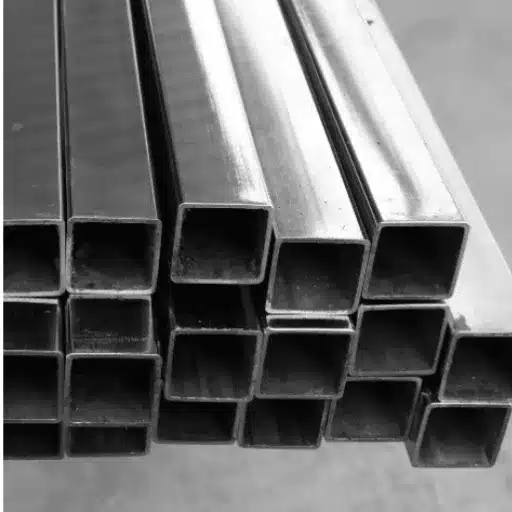
Key Elements in Stainless Steel
Stainless steel, basically, contains iron, chromium, nickel, and carbon, with a few other elements included to tailor its properties. The significant aspect imparting corrosion-inhibiting ability to stainless steel is chromium; it needs to be present usually at slightly more than 10.5%. The chromium, forming a very thin oxide layer on the surface, will be a passive layer protective against rust formation.
Nickel is thus considered a vital component, particularly for austenitic stainless steels, providing resistance to the acid and alkaline environment, enhancement of strength, and toughness. Carbon present in lesser concentrations imparts hardness and strength-especially in martensitic grades. Molybdenum and manganese are very often added to enhance resistance to pitting and crevice corrosion and augment overall durability.
Stainless steels are among the most versatile material choices in the industry with numerous applications, e.g., construction, medical devices, food processing, depending on its precise composition
Types of Stainless Steel: 304 and 316
Stainless Steel 304
Stainless steel 304 is often called the “everyday” steel because it undergoes corrosion, formability, and ease of fabrication. With 18% chromium and 8% nickel, it resists oxidation and most chemical environments, thus lending itself to numerous applications. This 304 stainless steel is used by industries such as food-processing, kitchenware, and architecture because it is non-reactive and economical. By performing excellently in normal work conditions, 304 stainless steel is really not the ideal choice in environments dominated by chlorides, as it may undergo pitting and crevice corrosion.
Stainless Steel 316
316 is essentially a more enhanced corrosion-resistant stainless steel, best suited to marine environments or where chlorides prevail. Stainless steel 316 contains 2 to 3 percent molybdenum in addition to chromium and nickel to provide greater resistance to pitting and crevice corrosion. Such applications compounded by these chemicals require 316 owing to its greater durability, and surgical instruments, saltwater, and chemical equipment are good examples. It also offers protection in extreme environmental conditions and thus is used in industrial and marine hardware.
The two share a great deal in common. Since the stainless steel types 304 and 316 differ primarily regarding their environmental and service requirements, 304 is used in most household or commercial activities, whereas 316 is used in more corrosive and rougher environments, justifying its slightly higher price.
Carbon Steel vs. Stainless Steel
Being cost-efficient, carbon steel combines strength with low corrosion resistance, while stainless steel is durable, shiny, and highly resistant to corrosion.
| Aspect | Carbon Steel | Stainless Steel |
|---|---|---|
| Price | Affordable | Expensive |
| Rustproof | Minimal | Excellent |
| Toughness | Strong | Durable |
| Finish | Dull | Glossy |
| Chromium % | Below 10.5% | Above 10.5% |
| Carbon % | Up to 2.5% | Less than 1.2% |
| Applications | Construction, tools | Kitchenware, medical |
| Flexibility | Rigid | Adaptable |
| Lifespan | Moderate | Long-lasting |
Applications of Stainless Steel
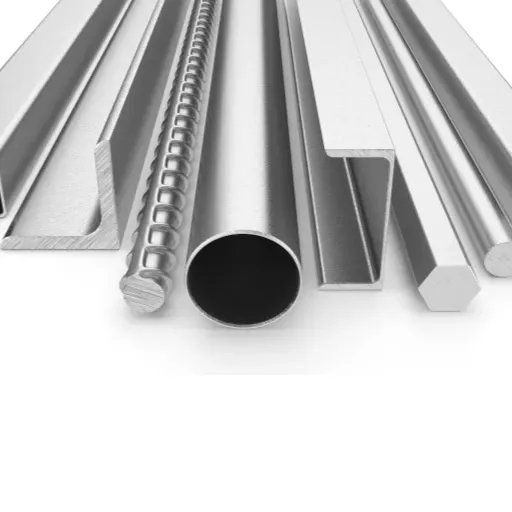
Common Applications in Construction
Architectural Cladding
Stainless steel finds huge application in building façades and roofs. Its excellent corrosion resistance coupled with exquisite appeal makes it a commodity for new-age modern designs meant to last. For example, 304 and 316 grades are considered standard with the intention of durability and good looks.
Structural Components
It is incorporated into beams, columns, and load-bearing elements thanks to its rather high strength-to-weight ratio and resilience to severe environmental conditions. In such cases, stainless steel guarantees a longer life for the structure when subjected to moisture and pollutants.
Reinforcement Bars (Rebars)
Stainless steel rebars are used increasingly in bridges, coastal structures, and tunnels where conventional materials might fail from corrosion. Studies have shown that stainless steel rebars can sustain almost 100 years in aggressive environments, thus cutting maintenance costs appreciably.
Handrails and Balustrades
The attributes of strength, rust resistance, and polishing make stainless steel a choice given for handrails and balustrade systems. Low maintenance offers additional advantage for the use of this material in public and commercial buildings.
Water and Drainage Systems
Steel stainless is regularly used for water storage and drainage systems and piping in construction projects. It is non-toxic and excellent for potable water systems monotonically with grades such as duplex stainless steels, which add to the resistance to chloride-induced corrosion.
Healthcare and Stainless Steel
The significance of stainless steel in the healthcare sector is its durability and resistance to corrosion, as well as hygienic properties. The surface of stainless steel is non-porous that does not favor bacteria accumulation, which, in turn, facilitates easy cleaning and sterilization. The following concerns the five most important applications in healthcare for stainless steel:
- Surgical Instruments
Because of the strength and the resistance to wear value conferred when subjecting the object to repeated sterilization processes, stainless steel is used mostly in making surgical implements-hence scalpels, forceps, and scissors. Can be used to achieve precision and can maintain integrity throughout time.
- Medical Implants
Stainless steel finds wide application in orthopedic implants such as screws, plates, and artificial joints. It resists corrosion and is relatively biocompatible as an implant for long periods in the human body.
- Hospital Furniture
Sickroom beds, trolleys, and tables all tend to be made of stainless steel since this material offers strength and ease of cleaning, which makes it suitable for dirty work in a hospital.
- Sterilization Tool and Equipment
Autoclaves and sterilizing trays are made from stainless steel. Withstanding high temperature and chemicals for sterilization, these materials ensure proper disinfection in a medical setup.
- Dental Equipment
From dental surgical instruments to orthodontic braces and wires, stainless steel has its way into dentistry in a big way. Its corrosion resistance and low cost make it an effective and dependable material for these applications.
In essence, stainless steel lends a medical and surgical armory the untarnished factor of cleanliness and security and the sturdiness it needs on a daily basis.
Stainless Steel in Culinary Arts
Stainless steel is perhaps one of the most fundamentally used materials in the culinary industry for durability, hygienic potential, and corrosion resistance. Given its versatility, the material finds itself suitable for an array of applications in both commercial kitchens and home kitchens. Here are the five primary applications of stainless steel in culinary arts:
- Cookware
Stainless steel has been the most popular material used in the manufacturing of saucepans, frying pans, and pots, for its ability to conduct heat. Stainless steel cookware of good quality usually has a multilayered base, aluminum, or copper core, to enhance heat conduction.
- Cutlery and Utensils
The stainless steel cutlery enjoys said qualities for strength, rust resistance, and beauty. It is also generally used in kitchen utensils such as spatulas, ladles, and tongs for these reasons: strength and ability to be cleaned.
- Kitchen Appliances
Some appliances such as ovens, refrigerators, and dishwashers have stainless steel exteriors and interiors because they can be quickly sanitized and maintained, thereby making a good choice for food preparation.
- Food Storage Containers
Stainless steel containers are preferred for storing food in safety without the fear of chemicals leaching into the food, for an added advantage of being environmentally safe and durable from plastic.
- Countertops and Work Surfaces
Stainless steel countertops are much preferred in commercial kitchens mainly because they are seamless, antibacterial, and stain-resistant. They offer a hygienic food preparation surface.
The extraordinary properties of stainless steel render it key to modern culinary techniques with efficiency and safety in various applications.
Benefits of Stainless Steel
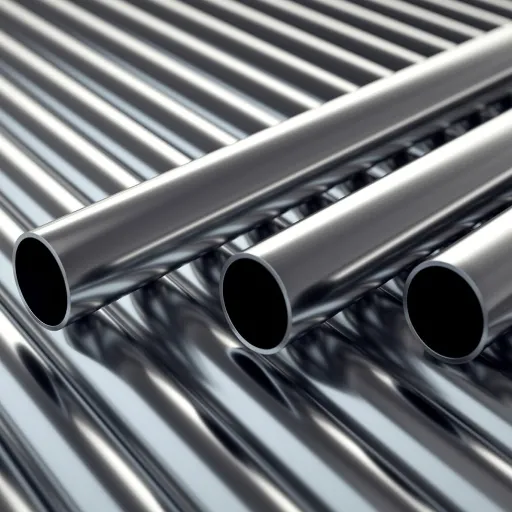
Corrosion Resistance of Stainless Steel
- Chromium Content: A minimum of 10.5% chromium occurs in stainless steel. This element unites with oxygen to create a thin, impassive film of chromium oxide that prevents the underlying metal from rusting or corroding.
- Resistance to Oxidation at High Temperatures: Since the chromium oxide layer is stable even at elevated temperatures, applications such as exhaust systems, boilers, and industrial furnaces need to be made of stainless steel.
- Additional of Molybdenum Improves Resistance: Certain grades of stainless steel, such as 316, contain molybdenum, which increases the resistance to chloride-induced corrosion, commonly found in marine or chemical plant environments.
- Low Maintenance Requirements: A low-maintenance steel due to its corrosion-resistant feature, thus reducing the need for surface treatment or recurrent maintenance and cutting down the long-term cost under exposed or harsh conditions.
- Suitable in Aggressive Environments: Stainless steel performs exceptionally in harsh atmospheres such as in the presence of an acid or an alkali, ensuring durability and efficiency without any loss in structural integrity.
Durability and Longevity
- Corrosion resistance: The surface of stainless steel is resistant to rust and corrosion; therefore, these steels are resistant to staining when rain and humid conditions prevail; thus, the steel exists much longer than the normal steel in these conditions. Hence a grade such as 304 or 316 is used for long-term applications in hostile environments such as marine and industrial.
- Strength retention at elevated temperatures: In situations where heat resistance is required, such as furnaces, boilers, or exhaust systems, stainless steel is appropriate since it keeps its mechanical characteristics at elevated temperature.
- Impact resistance: By nature, stainless steel offers excellent resistance to impact and mechanical forces so that it stands up to physical force without compromising structural integrity.
- Recyclable materials: Being stainless steel, it has an exceptional lifecycle as it can be recycled completely without deterioration in quality. Besides minimizing wastage, it encourages sustainability, and about 90 percent of stainless steel is recycled after its initial use.
- Minimal Material Degradations: Over long periods, stainless steel suffers negligible damages in chemically active and aggressive environments, leading to an outmost-low replacement frequency and costing maintenance.
Comparison with Non-Ferrous Metals
The ferous metals are those that contain iron, are strong and magnetic, while non-ferrous metals are devoid of iron, light in weight, and resistant to corrosion.
| Aspect | Ferrous Metals | Non-Ferrous Metals |
|---|---|---|
| Iron | Contains iron | No iron |
| Magnetic | Yes | No |
| Corrosion | Prone | Resistant |
| Weight | Heavy | Light |
| Strength | High | Moderate |
| Cost | Affordable | Expensive |
| Uses | Construction, tools | Wiring, aerospace |
| Examples | Steel, cast iron | Aluminum, copper |
Is Stainless Steel Considered Ferrous?
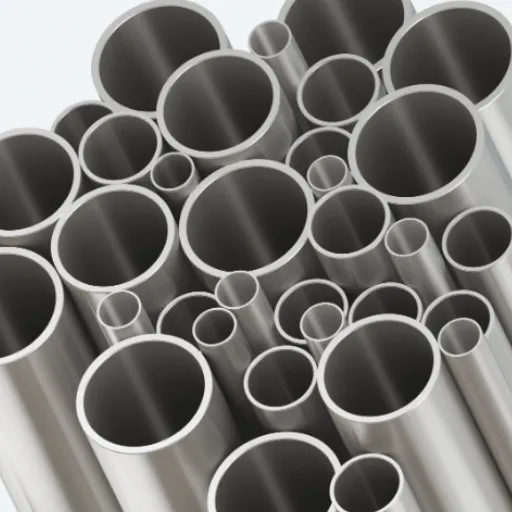
Stainless Steel and Iron Content
Stainless steel is classified as ferrous because it has a high percentage of iron in its composition. Generally, stainless steel is iron with at least 10.5 percent chromium to impart its corrosion-resistant properties. The chromium reacts with oxygen to form a thin, invisible layer of chromium oxide on the surface that protects the material from rust and degradation. Given the high amount of iron, the steel is classified as ferrous despite other alloying elements added for better corrosion resistance, such as nickel, molybdenum, or manganese.
The iron content in a particular type of stainless steel determines strength and magnetic properties. For example, the classic austenitic stainless steels are famed for their non-magnetic quality and high corrosion resistance due to higher percentages of chromium and nickel. On the other hand, ferritic stainless steels maintain the magnetic qualities of iron while offering moderate corrosion resistance. The duplex stainless steels blend these characteristics: strength and resistance with a ferrous identity.
The understanding of the ferrous nature of stainless steel becomes important while quality applications emphasize corrosion resistance and structural integrity. The construction, medical, and automotive industries take advantage of stainless steel for its durability and versatility. Although they are fine-tuned for particular applications, the inherent presence of iron in stainless steel imparts functionality and versatility, which is genuine in a myriad of different environments.
Non-Magnetic Variations of Stainless Steel
The non-magnetic varieties of stainless steel are specifically developed to show very little or practically no magnetism for those applications where any interference by magnetic forces is undesirable while involved with some functional operation. They are generally austenitic in nature and get their non-magnetic properties because of their crystal structures. The most usual non-magnetic stainless steels belong to the 300 series, which contain alloying elements chromium and nickel, such as grades 304 and 316. They are structurally adequate while offering very high resistance to corrosion, and thus they are used in medical devices, electronic equipment, and food processing industries.
A prime factor that influences the magnetic properties of stainless steel is the work-hardening process. Even the non-magnetic grades, such as 304, may attain weak magnetism under cold working or some other deformation. This is a result of a modification in the material’s microstructure where certain austenitic phases get converted into martensitic structures. Still, these grades largely still possess near-non-magnetic properties and are still chosen for industries that require materials that are non-ferromagnetic.
In return, in places where hygiene and cleanliness take the utmost importance, this non-magnetic stainless steel performs accordingly. For instance, type 316 stainless steel is the best as it resists pitting and crevice corrosion from chlorides; hence, it finds its use in marine and pharmaceutical applications. Moreover, metallurgical engineering keeps advancing to make the materials stronger and more corrosion resistant, yet nonmagnetic in character. This progression has maintained the place of nonmagnetic stainless steels in the forefront of modern technology and industrial innovation.
Classification of Stainless Steel as Ferrous
The classification of stainless steel as ferrous is made on the basis of the metal’s primary composition and magnetic property. Stainless steel is prepared from iron, thus the main characteristic which defines a ferrous metal. It generally contains a high percentage of iron as well as chromium and other alloying elements to enable enhanced resistance to corrosion and mechanical properties of the stainless steel material. Thus, almost all grades of stainless steel and related materials would be classified as ferrous metals and considered iron-based.
Not all stainless steels exhibit the same magnetic properties, an area of confusion for their classification. For example, austenitic stainless steels are non-magnetic due to their higher nickel content that changes their crystal structure. On the other hand, ferritic and martensitic stainless steels with less nickel content are magnetic. Nevertheless, all stainless steels are considered ferrous metals in view of the very presence of iron in their constitution.
In view of this, I would like to classified stainless steel as a ferrous material given its iron composition and metallurgical origin. Even if some kinds of stainless steel are non-magnetic, the fact that they contain iron makes it clear that they belong in the ferrous bracket. This way of classifying basically emphasizes the significance of iron as far as the properties and applications of stainless steel in various industries are concerned.
References
- A Study of the Structure and Properties of Certain Stainless Steels – This study provides insights into the chemical composition and properties of stainless steel, emphasizing its classification.
- Studies Related to Microbially Induced Corrosion of Stainless Steel 304 and 316 – This research explores the corrosion resistance of stainless steel, a key characteristic of ferrous metals.
- The Impact of External and Self-induced Magnetic Fields on the Development of Corrosion on Ferrous and Non-ferrous Materials– This dissertation discusses the behavior of stainless steel under various conditions, comparing it with other ferrous and non-ferrous materials.
Frequently Asked Questions (FAQ)
Q: Is stainless steel a ferrous metal?
A: Typically, it can be said that stainless steel is a ferrous metal because it contains iron, but since it also contains chromium and different elements to improve corrosion resistance, it makes the difference.
Q: What are ferrous metals?
A: Ferrous metals contain iron; they are typically magnetic and include stainless steel, steel, mild steel, and so forth.
Q: How is stainless steel considered in relation to non-ferrous metals?
A: Stainless steel contains iron, so in this context, it is a ferrous metal opposite to nonferrous metals that contain no iron. Nonferrous metals comprise aluminum, copper, titanium, etc., while they are benign to rust.
Q: Are all types of stainless steel ferrous?
A: Generally, most types of stainless steel go by the generic name ferrous since iron is the major component; however, some stainless steel grades may contain greater amounts of other metals, which affects their properties.
Q: Does moisture cause rusting of stainless steel?
A: Stainless steels function with excellent corrosion resistance; however, in some specific environments-in the presence of water, given the little attention to proper maintenance-they may become susceptible to attack.
Q: May you list examples of non-ferrous metals?
A: Non-ferrous metals include aluminum, copper, lead, and titanium. They are non-Iron-bearing metals and generally do not rust.
Q: For what structural application is stainless steel manufactured?
A: Stainless steels are mostly structural in application, for they are strong and durable and corrosion-resistant in such environments as would be found in food and beverage industries and products steel.
Q: How is stainless steel used in scrap metal recycling?
A: Stainless steel can enter into recycling as scrap metal in a sustainable metal economy. Being ferrous, it can be recycled along with other ferrous metals in a recycling plant.
Q: Why are stainless steels called steel alloys?
A: Stainless steels are steel alloys because they contain combinations of iron with chromium and other elements. This unique composition imparts to them certain properties that enhance their performance over regular steels.

